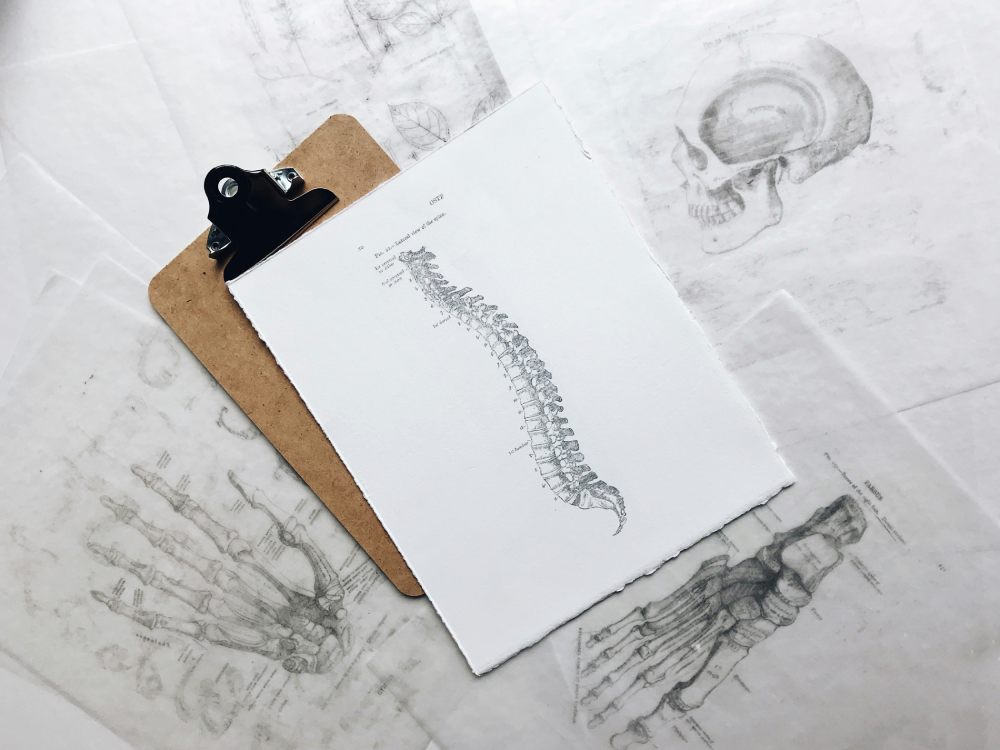Understanding Gate Control Theory: A Key to Natural Pain Relief

Living with pain can be difficult, and can lead you to try all types of remedies and treatments to try and find comfort and release. Understanding how pain works can be incredibly informative and beneficial for those who live with acute or chronic pain.
One key concept in pain management is the Gate Control Theory of Pain, which accounts for how pain signals are processed in the body. In this post we’ll focus on the Gate Control Theory, what it is, how it works, and how you can use the Gate Control Theory for pain relief.
What is the Gate Control Theory of Pain?
You might think of pain as a direct cause-and-effect process in that if you hurt yourself, you will feel pain associated with the way you hurt yourself, but this doesn’t explain why people experience chronic pain, and pain is anything but simple.
The Gate Control Theory of Pain, published by Ronald Melzack and Patrick Wall in Science in 1965, is a way of understanding how we experience pain. According to the theory pain signals are not simply transmitted directly from the site of injury to the brain. Instead they must pass through a “gate” where they are either blocked, or allowed to travel to the brain. This gate is located in the spinal cord, and can either amplify or suppress pain signals[1].
The Gate Control Theory revolutionized the way we understand pain.
How Does the Gate Theory of Pain Work?
The Gate Control Theory of Pain speaks to the idea that the spinal cord is the “gatekeeper” of pain signals. Non-painful stimuli can block the "gates" in the nervous system that transmit pain signals, preventing pain sensations from reaching the central nervous system.
Large vs Small Fiber Activity
In the body you have both large and small nerve fibers that act as the path for signals to travel through. Large fibers (A-beta fibers) are responsible for carrying non-painful sensations like pressure and touch. When these fibers are activated, they can effectively "close the gate," preventing pain signals from passing through. Whereas small fibers (C fibers) transmit pain signals[2]. When these fibers are activated, they can "open the gate," allowing pain signals to travel to the brain.
If large fibers are stimulated, by rubbing the skin around an injury, massage, heat therapy, or stretching, they can block or reduce the perception of pain. This is why heat, massage, and stretching are commonly suggested as techniques for pain management[3].
How to Use Gate Control Theory with Combined Techniques to Help Manage Pain
Understanding the Gate Control Theory of Pain can help you manage pain more effectively by providing a framework for combining pain management strategies for enhanced relief. Using products like MEDISTIK in conjunction with other pain-relief tactics can amplify their effectiveness by targeting large nerve fibers and stimulating the body's natural healing processes.
Here are some practical methods to use Gate Control Theory in your everyday life:
Massage and Topical Relief
Massage improves circulation and helps reduce muscle tension by activating large nerve fibers. When massage therapy is combined with topical analgesics like MEDISTIK, which provides localized pain relief through its hot-and-cold dual mechanism, the synergistic effects can help enhance pain relief for musculoskeletal discomfort. This combination has been shown effective to manage shoulder pain and other muscle pain. [4]
Stretching and Topical Support
Stretching can help relieve tension in muscles and stimulate large nerve fibers, which reduces pain perception. Pairing stretching exercises with MEDISTIK allows you to address soreness and stiffness while also promoting flexibility and mobility. This dual approach is proven to be beneficial for chronic musculoskeletal pain. [5]
Hot and Cold Therapy
Both heat treatments and cold treatments can help to influence the gate mechanism, and help reduce the perception of pain. Heat increases blood flow, which helps to stimulate large fibers. Cold therapy reduces inflammation and numbs pain. You can either use warm compresses and ice packs interchangeably, or use a topical pain relief product that utilizes a hot-and-cold effect like MEDISTIK to reduce pain. [6]
Physical Activity and Recovery
One benefit of regular physical exercise is the release of endorphins. Not only are endorphins natural painkillers, they activate large fibers helping to reduce your perception of pain. Regular physical activity can also help to improve the blood circulation and reduce inflammation. Using MEDISTIK post-workout as part of your recovery routine can help relieve muscle soreness and improve circulation, helping you maintain an active lifestyle.
By integrating MEDISTIK with these pain management strategies, you can create a multi-faceted approach to natural pain relief, maximizing the benefits of the Gate Control Theory while addressing the root causes of discomfort.
EXPLORE TOPICAL PAIN RELIEF SOLUTIONS
What to Take for Muscle Pain
Muscle pain can seriously impact your daily life, and can be difficult to treat effectively. When muscle pain becomes severe, or if you experience chronic pain, there are a variety of options you can explore.
Over-the-counter (OTC) Medications for Muscle Pain
Over-the-counter medications like Advil, Naproxen or Ibuprofen can be taken to help with muscle pain. Each OTC medication has its own mechanism of action, and some medications should only be taken under the care of a medical professional.
Topical Treatments for Muscle Pain
Topical treaments like MEDISTIK can be applied directly to the impacted area to provide effective pain relief. MEDISTIK in particular uses a hot-and-cold mechanism to help stimulate the large fibers and reduce inflammation in the affected area. Topical treatments are often preferred as they offer targeted relief.
Understanding Natural Pain Relief
The Gate Control Theory is key in our understanding of the perception of pain, and helps us know why popular treatments work. Many people are wary of the side effects of oral pain medication, and want to turn to topical pain relief or natural pain relief products instead.
Pain treatment plans should always be developed with the guidance of a medical professional. Some natural pain relief options include:
- Herbal remedies
- Acupressure
- Dry Needling
- Mindfulness and Meditation (including listening to AI music designed for relaxation and pain reduction)
- Stretching and gentle exercise
Conclusion
The Gate Control Theory of Pain was a revolution in our understanding of how pain works, and this theory can be used to help treat muscle pain in a variety of ways. Those suffering with pain can benefit from understanding the Gate Control Theory to help make educated choices about their pain treatment plans.
At MEDISTIK, we adhere to strict sourcing guidelines and rely on peer-reviewed studies, reputable academic research institutions, and trusted medical organizations. We use only credible, high-quality sources to ensure our content is accurate, reliable, and trustworthy. Learn more about how we maintain content accuracy and integrity by reviewing our editorial process.
- Mendell LM. Constructing and deconstructing the gate theory of pain. Pain. 2014 Feb;155(2):210-216. doi: 10.1016/j.pain.2013.12.010. Epub 2013 Dec 12. PMID: 24334188; PMCID: PMC4009371.
- Moayedi, M.; Davis, K. D. (3 October 2012). "Theories of pain: from specificity to gate control". Journal of Neurophysiology. 109 (1): 5–12. doi:10.1152/jn.00457.2012. PMID 23034364. S2CID 11260950
- Nick Ng, BA, CMT, Massage Fitness Mag (May 18, 2020). What Is the Gate Control Theory of Pain? Retrieved December 9, 2024, from https://massagefitnessmag.com/massage/gate-control-theory/
- Shi, Y., & Wu, W. (2023). Multimodal non-invasive non-pharmacological therapies for chronic pain: mechanisms and progress. BMC Medicine, 21(372). https://bmcmedicine.biomedcentral.com/articles/10.1186/s12916-023-03076-2
- Stanos, S. P. (2007). Topical agents for the management of musculoskeletal pain. Journal of Pain and Symptom Management, 33(3), 342-355. https://www.jpsmjournal.com/article/S0885-3924(07)00003-6/fulltext
- Kim, E. J., Choi, Y. D., Lim, C. Y., Kim, K. H., & Lee, S. D. (2015). Effect of heating and cooling combination therapy on patients with chronic low back pain: study protocol for a randomized controlled trial. Trials, 16(285). https://trialsjournal.biomedcentral.com/articles/10.1186/s13063-015-0800-4

Medically Reviewed By: Luke Fuller, BSci (Clin. Sci), MHSci (Osteopathy), MPhysio, CSCS
Medically Reviewed By: Luke Fuller, BSci (Clin. Sci), MHSci (Osteopathy), MPhysio, CSCS
Luke Fuller, a dual-qualified Osteopathic Manual Practitioner and Physiotherapist, specializes in musculoskeletal dysfunction and sports injuries.
Related Posts
-
![]() Pain Management
Pain ManagementWhat is the Treatment for Sacroiliac Joint Pain?: Ask The Experts
Living with pain can be difficult, and can lead you to try all types of remedies a...4 Min. To Read -
![]() Pain Management
Pain ManagementWhat is the Best Painkiller for Knee Pain?: Ask The Experts
Living with pain can be difficult, and can lead you to try all types of remedies a...4 Min. To Read
 - FREE SHIPPING ON ORDERS $50+
- FREE SHIPPING ON ORDERS $50+

 - FREE SHIPPING ON ORDERS $40+
- FREE SHIPPING ON ORDERS $40+













